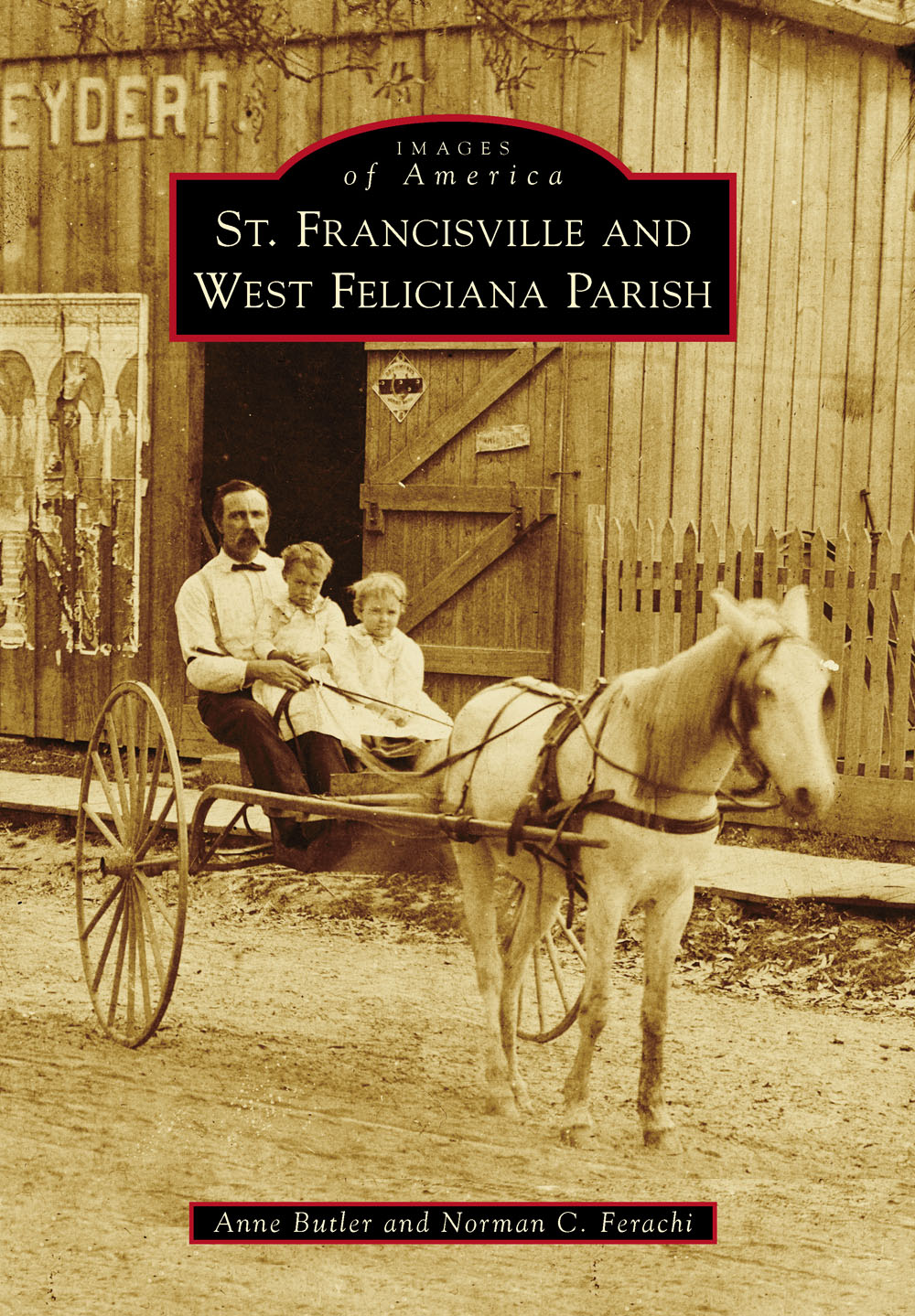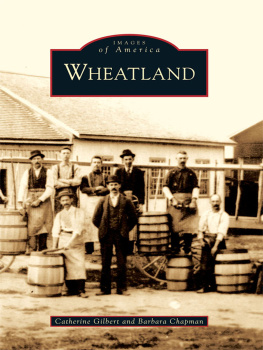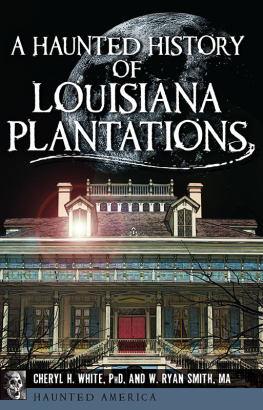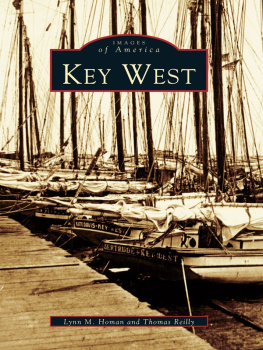
IMAGES
of America
ST. FRANCISVILLE AND
WEST FELICIANA PARISH

Founded in the closing years of the 18th century, right on the banks of the Mississippi River below St. Francisville, the port city of Bayou Sara was often inundated by floodwaters rushing through crevasses or breaks in the inadequate levee system. The water filled streets and flooded businesses and residences. (Courtesy of West Feliciana Historical Society.)
ON THE COVER: Charles Weydert, shown with his daughters Augusta (left) and Gretchen, owned hardware stores and blacksmith shops in Bayou Sara. He later moved his businesses up the hill, safe from Mississippi River floods. His 1896 hardware store in St. Francisville is now the headquarters and museum of the West Feliciana Historical Society. (Courtesy of Weydert family.)
IMAGES
of America
ST. FRANCISVILLE AND
WEST FELICIANA PARISH
Anne Butler and Norman C. Ferachi

Copyright 2014 by Anne Butler and Norman C. Ferachi
ISBN 978-1-4671-1302-1
Ebook ISBN 9781439648759
Published by Arcadia Publishing
Charleston, South Carolina
Library of Congress Control Number: 2014940303
For all general information, please contact Arcadia Publishing:
Telephone 843-853-2070
Fax 843-853-0044
E-mail
For customer service and orders:
Toll-Free 1-888-313-2665
Visit us on the Internet at www.arcadiapublishing.com
To all those historians and preservationists whose efforts and accomplishments give us our unique sense of place and our hope that preservation really can move into the future hand in hand with progress.
CONTENTS
ACKNOWLEDGMENTS
What a debt we owe to those who have come before, and to those who continue the task of preserving and appreciating our history as a basis for a hopeful future: Libby Dart, longtime head of the West Feliciana Historical Society, and her stalwart lieutenants, Nancy Vinci and Ann Bennett; Lucille Leake, who came up with the inspired idea of a spring pilgrimage through historic homes, and Ed Daniel, whose Rural Homestead provides a balance by demonstrating the daily skills of simpler country folk; Hannah Rosenthal Wood, whose never-ending efforts maintained the lovely little Hebrew Rest cemetery; Billie Magee, whose dreams of a cultural center saved the first public school building, and Nancy Vinci, who has taken up that torch and run with it; longtime St. Francisville mayor Billy DAquilla and the preservation committees who, with few exceptions, have protected significant structures throughout town; Violet Pate, dedicated historian of our oldest black Baptist church; photographers and artists who have found inspiration in our landscapes and architecture, like Anne Plettinger and genealogist Ann Weller; owners of historic structures who froze in winter, baked in summer, put pots beneath the leaks, dodged falling plaster, and held on over all those years of tight money, failed crops, wars, and other pestilences; the Underwoods and Trimbles, rescuers of great old gardens; and all the others with the awareness and great good sense to appreciate what a fragile treasure we have.
It is gratifying to see second-, third-, even fourth-generation descendants of those early preservationists continuing their efforts and enjoying the fruits of their struggles. Yes, St. Francisville and West Feliciana Parish have an enduring sense of place. We thank the community members who shared their photographs and family stories. We are especially grateful to museum director Helen Williams and the West Feliciana Historical Society board of directors for recognizing the importance of preserving their collections, now being digitally archived. Many of the images in this book appear courtesy of the West Feliciana Historical Society (WFHS). We have done our best in regards to accuracy; please remember, this volume is not intended to be all-inclusive.
INTRODUCTION
The earliest inhabitants of West Feliciana were Native Americans of the Houma and Tunica tribes, who had a thriving trade with European explorers traversing the Mississippi River. The first formal settlement, Sainte Reyne aux Tonicas, was a short-lived, small fort established in 1729 by the French. For the remainder of the 18th century, the area was dominated by England and then Spain. Both governments encouraged settlement by offering large land grants, and the earliest settlers were predominantly Anglo planters with the means to establish immense plantations growing indigo, cotton, and sugarcane on the rich, well-watered Feliciana soils.
Laid out in 1807 high upon a narrow loessial finger ridge overlooking the Mississippi River, St. Francisville served as the cultural and commercial center for the surrounding plantation country, as well as the seat of parish government after 1824. The little town actually began as a cemetery when Capuchin monks from across the river ferried their dead to St. Francisvilles high bluffs for burial, safe from floodwaters. The monks gave the settlement the name of their patron saint.
Below the hill, on flatlands along the river, the town of Bayou Sara developed in the late 1790s, and it would become the most important antebellum port on the Mississippi River between New Orleans and Natchez. A mile of dockside warehouses stored cotton collected from outlying plantations by one of the countrys earliest standard-gauge railroads for shipment on riverboats to markets around the world; there were also extensive commercial and residential districts. Bayou Sara was damaged by shelling during the Civil War, devastated by raging fires that wiped out 50 or more structures at a time, and inundated by floodwaters over and over until widespread floods in 1912 and in the 1920s completely obliterated it.
Atop the bluff, St. Francisville thrived. Its early roads were muddy quagmires traversed by herds of cattle and horse-drawn wagons bound for the river port at Bayou Sara under the hill. Yet, town developer John H. Johnson optimistically gave the streets names like Prospect and Prosperity, and progress was swift. By 1809, a hotel had been erected. A Masonic lodge was chartered in 1817. In 1819, the states second library was begun, and an open-air brick market was built with arches through which produce wagons could be driven. By 1828, the states first Episcopal congregation outside New Orleans had joined in worship. The local newspaper sent its editor to cover the War of 1812 as one of the earliest war correspondents.
St. Francisville is described, with little exaggeration, as a town two miles long and two yards wide, for the land falls off steeply into deep hollows on either side of the inhabited ridge. The two main streets are Ferdinand and Royal, tributes to the Spanish monarch who continued to claim Louisianas east side of the Mississippi River as part of Spanish West Florida even after the Louisiana Purchase of 1803. The strong-willed Anglo-Saxon settlers of the area chafed under inept Spanish rule and twice revolted.
The 1804 Kemper Brothers Rebellion was more colorful than successful, its plotters turned over to authorities but subsequently rescued. The plotters repaid one erstwhile captor by cutting off his ears and displaying them, pickled in wine, in the family tavern, if stories can be believed. A second rebellion, in 1810, was carefully organized and well planned. The successful coup resulted in the capture of the Spanish fort in Baton Rouge and the establishment of the Republic of West Florida. Its capital was established in St. Francisville, its constitution was well conceived, and its proud blue flag was centered by a single white star. The republics glory days numbered only 74 before the territory joined the rest of Louisiana to become a state in 1812.
Next page











